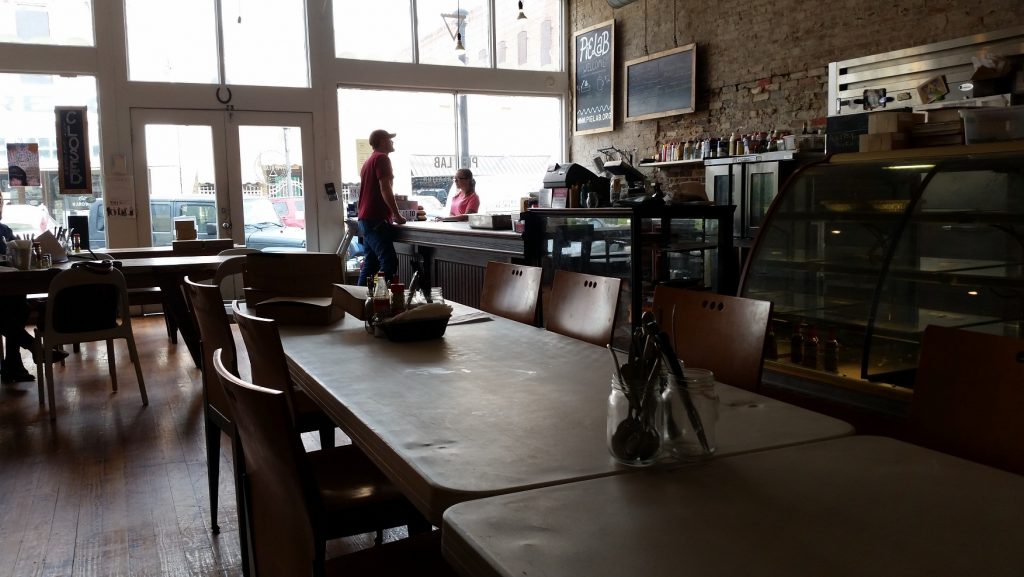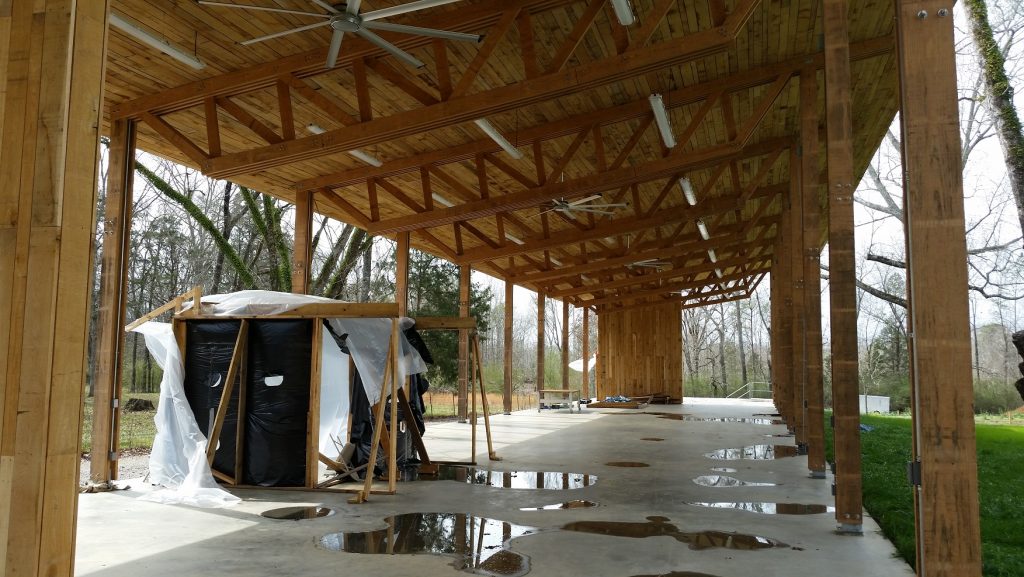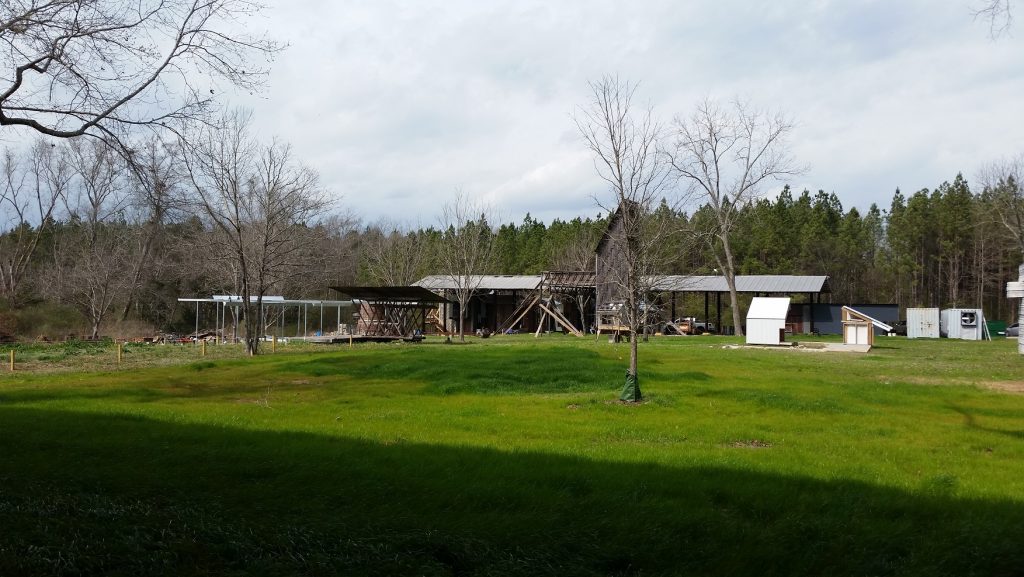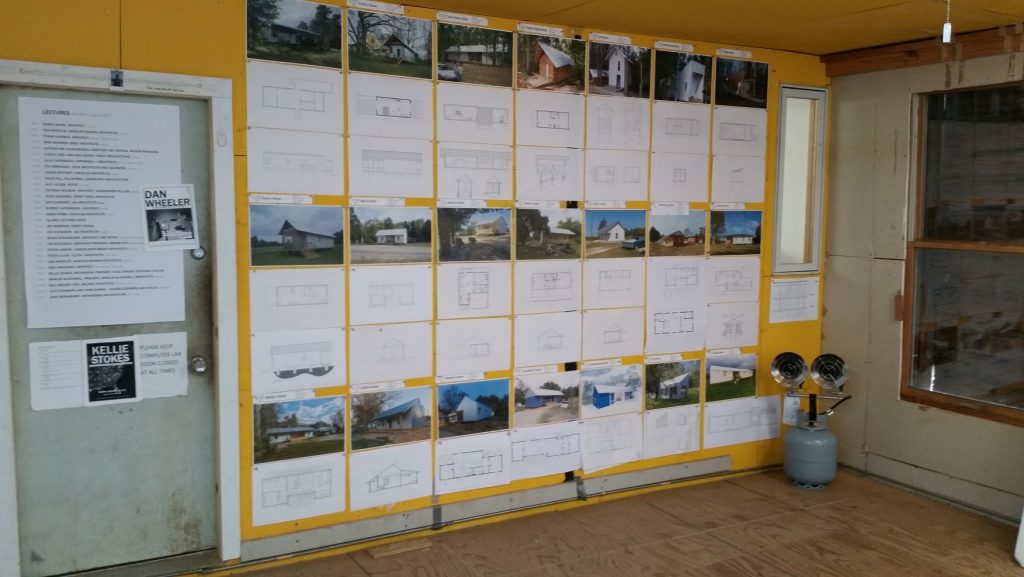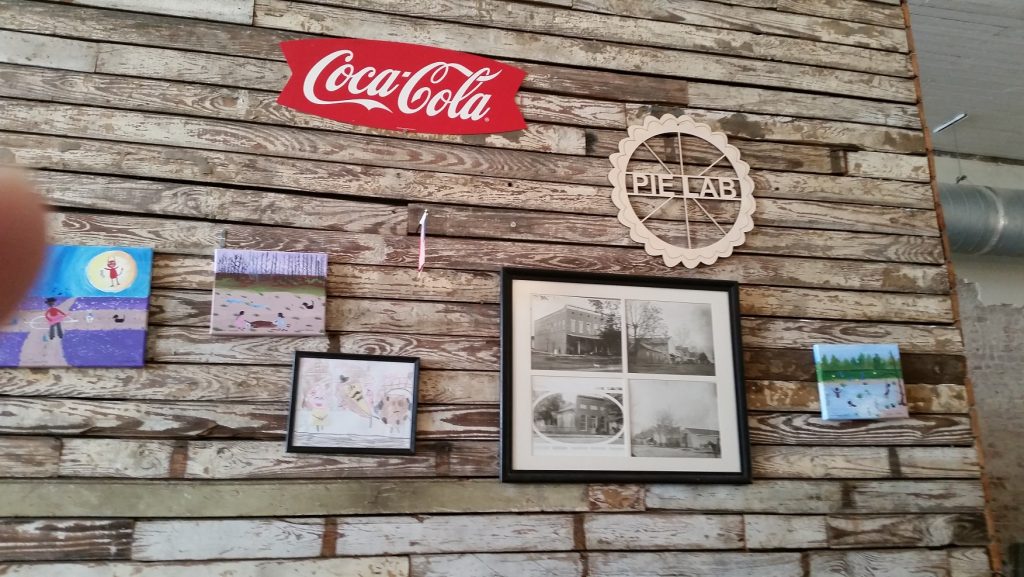
First, let me give you a little background. In 2008, I drove my camper from my home in VA to Austin, TX with a couple of friends and collaborators, heading to the Austin Maker Faire to build a digitally fabricated shed at the Faire. On our way through Alabama we stopped at Rural Studio in Newbern for a quick visit. Rural Studio is an outreach program of the Auburn architecture program, founded by Samuel Mockbee, that specializes in innovation in materials and design in affordable construction. Then in 2011, I attended the Better World by Design conference in Providence, RI and one of the keynote speakers was John Bielenberg of Project M. He talked about the power of “thinking wrong” and several projects he was involved in, including Pie Lab, a combination pie shop and community center in Greensboro, AL that was just up the road from Newbern.
For years I had been working on various, very cool CNC cut structures and loved working on them, but they all had a common problem – you couldn’t get a building permit to build them without jumping through a lot of hoops, if at all. At the time, they were not a viable solution for affordable housing. For a couple of years, I had been helping Dennis Michaud of Homebuilt work on ways to democratize the construction of affordable housing using CNC technology, and had gotten pretty passionate about the idea of using CNC to make it easier to build homes that were building-code compliant by default. At the same time, Rural Studio had been running an interesting project called the 20k Home project to design affordable homes. They were struggling with the same problem that Homebuilt was working on solving – the need for skilled labor and its associated costs.
Fast forward to 2017 and my trip to Austin. Since Newbern was kind of on the way from Florida to Austin, I made contact with the director of the 20k Home project to try to visit Rural Studio and to talk about the power of digitally augmenting traditional construction methods. Of course I couldn’t get that close without stopping at Pie Lab and having a slice of pie, so my first stop was in Greensboro to explore the town and have some lunch. There are lots of amazing things going on in Greensboro, much of it spearheaded by Pam Dorr, but the highlight of the visit to Greensboro was the slice of brown sugar buttermilk pie I had for dessert!
Full of chicken salad, black-eyed peas, and pie I headed down the road to Rural Studio to meet Natalie Butts and learn more about the 20k Home project. Although $20,000 was the original design goal – to see if a house could be constructed for that little money – they are really just trying to make housing as affordable as possible.
The first thing I saw when I drove up was the new fabrication shop they are building. In this first phase, they’ll use it as an open building area, eventually closing it in to house power tools including CNC equipment. Currently they have to drive to the Auburn campus to use CNC equipment for projects, a 2 1/2 hour drive each way!
Since I had gotten there a little early, I had a chance to wander around a bit and explore the various building scattered around that students had designed and built using materials you don’t normally see in houses, like bales of recycled cardboard and old license plates as shingles!
I had taken a couple of sample parts to build a small wall section as show-and-tell to demonstrate the idea that Dennis Michaud had developed with Homebuilt, and then we were off to see three variations of one-bedroom 20K Homes that they had constructed. These homes had been built as model homes of sorts, to keep the public from wandering up to homes that people were living in and snooping around!
After exploring these homes we continued on to their Design Studio, in downtown Newbern where students worked on projects. On the wall as you enter they had hung pictures and descriptions for the designs they had built so far, showing the evolution of the project. We met with some of the design students and instructors and talked about the things they struggle with and possible solutions. They were very interested in the possibilities that introducing digital technologies can bring in helping reduce labor costs and increase affordability.
I have a special interest in these sorts of projects because the area I live in is similar to this, with an economy based on agriculture and aquaculture, and a great need for both affordable housing and work training. This was an inspiring visit, and even though there wasn’t a ShopBot to be seen, they were very aware of the possibilities that CNC and digital tools can bring to a project like the 20K Home project.
